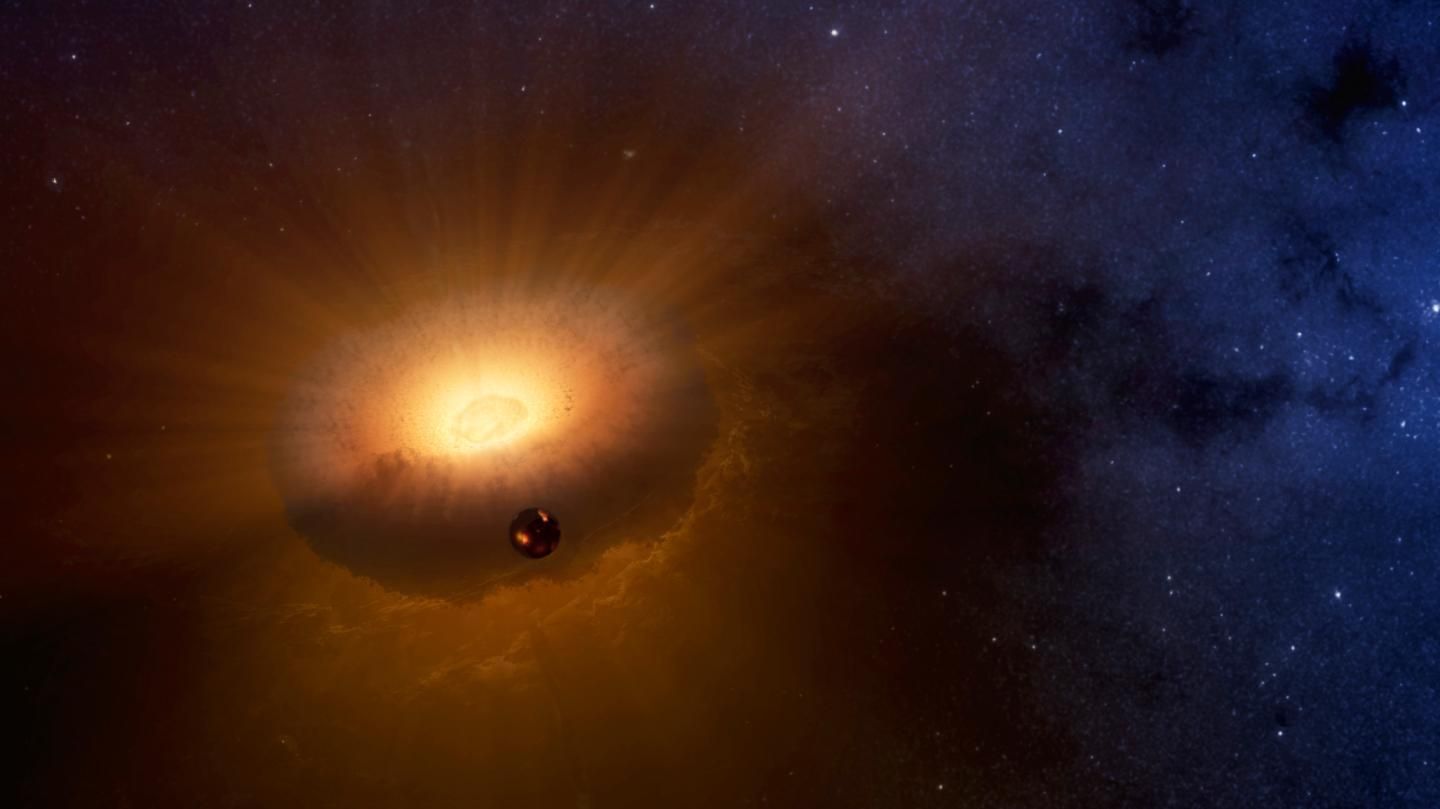
The Moon is the Earth's only natural satellite, but where did it come from?
Most scientists accept that the Moon was formed after a Mars-sized object, known as Theia, glanced off the Earth around 4.5 billion years ago, throwing up large amounts of rocky material into orbit, which eventually clumped together to form the spherical object we are familiar with.
But now, researchers from Harvard University, the University of California, Davis (UC), and the University of Bristol, have proposed a different explanation based on computer models, which, they say, addresses some of the issues that are unexplained by the traditional view.
In a study, published in the Journal of Geophysical Research: Planets, the researchers propose that the Earth did indeed suffer a massive collision around this time, but, instead of the impact throwing up large amounts of material into orbit, it vaporized the young planet, creating a rapidly spinning doughnut-shaped disk of super-heated, evaporated rock—known as a synestia.
Synestias are a hypothetical planetary body first proposed by two of the authors of the latest study—Sarah Stewart, a professor of Earth and Planetary Sciences at UC, and Harvard graduate student Simon Lock—in 2017. They are thought to form after two planet-sized bodies collide.
According to Lock and Stewart, synestias are very short-lived, likely lasting just a few hundred years. Over time they radiate heat, which causes them to shrink rapidly and condense into a planet consisting of material from the original object and the one that caused the collision.
Read more: The moon is getting 4G cell service and a live video feed next year
"We are proposing that the Moon formed inside the vaporized Earth," Lock told Newsweek. "The synestia is huge, with an equatorial radius of more than ten times that of the present-day Earth. Because the impact-produced by the synestia was so big, the Moon formed inside its vapor surrounded by gas at pressures of tens of atmospheres and temperatures of 3000-4000K (4000-6000 F)."
Near the edges of the doughnut-shaped structure, fragments of molten rock would have collided together to form the first "seeds" of the proto-Moon, according to Lock.
"The surface of the synestia was hot (2300 K) and the body cooled rapidly," he said. "This loss of energy led to the condensation of rock droplets at the surface of the synestia, and a torrential rain of rock—ten times the rain rate in a hurricane on Earth—fell towards the center. Some of this rain fell onto the lunar seed, and the Moon grew."
"After ten years or so, the synestia shrank inside the orbit of the Moon and the nearly fully-formed Moon emerged from the vapor. The synestia continued to cool and became the Earth within a thousand years." This process is remarkably fast.
The researchers say that the new model explains certain aspects of the Moon which cannot be resolved with the traditional model. One issue is that the Moon is almost chemically identical to the Earth, albeit with some small differences.

In the traditional model, the Moon is formed mostly with debris from just one of the colliding bodies. However, the fact that it has such a similar chemical composition to the Earth suggests it was made from the same source material.
However, the Moon has far less volatile elements—such as potassium, sodium and copper—which are relatively abundant on Earth. Scientists have been unable to explain this up till now.
The new hypothesis demonstrates that this lack of volatile elements can be explained by the Moon's formation inside the synestia. Because the Moon formed within the synestia, surrounded by hot vapor, it inherited its composition from Earth but only retained the elements that are more difficult to vaporize.
"The more volatile elements remained in the vapor of the synestia," Lock said. "When the synestia cooled and contracted inside the Moon's orbit, it took all the more volatile elements with it. We have shown that the pressures and temperatures at which the Moon would have formed inside the synestia would give it a composition similar to that observed in our Moon. Ours is the first model to be able to quantitatively explain the Moon's composition and its size."
Furthermore, Lock argues that in the traditional scenario, it would be very difficult for a collision to throw enough material into orbit to form the Moon, and there would be a very narrow range of collisions capable of doing it.
"There's only a couple of degrees of impact angles and a very narrow range of sizes, and even then, some impacts still don't work."
The scientists acknowledge their research is still very much in the preliminary stages and that more work is needed to further refine the model, especially because synestias are currently theoretical objects and have not been observed yet.
Uncommon Knowledge
Newsweek is committed to challenging conventional wisdom and finding connections in the search for common ground.
Newsweek is committed to challenging conventional wisdom and finding connections in the search for common ground.
About the writer
Aristos is a Newsweek science reporter with the London, U.K., bureau. He reports on science and health topics, including; animal, ... Read more
To read how Newsweek uses AI as a newsroom tool, Click here.








